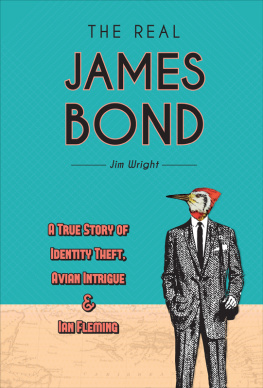THE WEST INDIES
Table of Contents
I
Table of Contents
THE SPANIARDS AND THEIR VICTIMS
Table of Contents
When the early writers spoke of America as the new world, mundus novus, they could hardly have appreciated the full meaning of the name. True, it was a new world to them, with new animals, new plants, and a new race of mankind; but the absolute distinctness of everything, especially in the tropical regions, was not understood. With our fuller knowledge the ideas of strangeness and novelty are more and more impressed, and we are ready to exclaim, Yes! it is indeed a new world.
Unlike those of the eastern hemisphere, the peoples of the West are of one race. Apart from every other, the development of the American Indian has gone on different lines, the result being a people self-contained, as it were, and unmodified until the arrival of the European. The American is perhaps the nearest to the natural man, and his character is the result of nature's own moulding. When compared with the European or Asiatic he seems to be far behind, yet the civilisation of Peru and Mexico was in some respects in advance of that of their conquerors. This was brought about by a dense population which forced men into collision with each otherin other parts of the continent and on the islands they were more isolated and therefore less civilised.
In the forest region of the Spanish Main, and on the West Indian islands, the communities were, as a rule, very small and isolated one from another. A kind of patriarchal system prevented much communication, and inter-tribal disputes were a bar to union. Every community distrusted every other, and even when one tribe fought against its neighbour there were few attempts to bring the sections together against the common enemy.
On the coasts and islands of the Caribbean Sea, at the time of their discovery, lived two distinct peoples, the Arawaks and the Caribs. There were also a few other tribes of minor importance, such as the Warrows, but these made little impression, and may therefore be left out of consideration. The remnants of the two great stocks still exist in Guiana and at the mouth of the Orinoco, living to-day in much the same manner as they did when the country was first discovered by the Spaniards.
Four centuries ago the Greater Antilles were exclusively inhabited by Arawaks, and the Lesser by Caribs. The Arawak, as his name implies, was more or less an agriculturalista meal-eater, a cultivator of vegetables, mainly cassava. From the poisonous root of this plant bread, drink, and a preservative sauce for meat, were prepared, so that, with game or fish, it formed the staff of life. The probable course of his migration was from Yucatan or Mexico to the south-east, terminating in Guiana, and from thence north through the whole of the Antilles. When Columbus arrived people of this stock filled the larger islands and the Bahamas, but along the coast and in the island of Trinidad they disputed the occupation of the territories with the Caribs. In Porto Rico also the Caribs had become aggressive, and even in Hispaniola the Arawaks had to defend their shores against that warlike people. If we believe the accounts of the Spaniards the inhabitants of the Greater Antilles were not altogether a savage people. Whether they had destroyed all the larger game, or whether they found none on their arrival, the fact remains that they were agriculturalists rather than huntsmen. They were, however, expert in fishing, and built great canoes with sails, in which they carried on their operations even in comparatively rough water. Their provision grounds were highly praised by the Spaniards in language that could hardly apply to little clearings like those in the Guiana forest. In them were grown, besides cassava, yams, sweet potatoes, and maize, while other things such as cotton and tobacco were also largely cultivated. The natives had also acquired several arts besides that of canoe building, which, when we consider their want of proper implements, was almost wonderful. Cotton was spun and woven into cloth for their scanty garments, gold cast and hammered into figures and ornaments, and wood and stone idols and weapons were also carved. All this was done with stone implements, even to the work of hollowing great logs for their canoes, and shaping planks. We read of axe-heads made of guanin, an alloy of gold and copper, and also of attempts to make similar tools of silver, but these were very rare, and could hardly have been utilised to any good purpose. When we appreciate the labour and pains taken in excavating a large canoe, with only fire and the stone adze, we can see that these people were by no means idle. Nor were they altogether wanting in appreciation of art, for the figures on their baskets and pottery were beautifully true geometrical patterns, and their so-called idols, although grotesque and rude, often striking.
On the mainland the Arawaks lived in small communities, only electing a war-chief as occasion requiredin Hati the Cacique seems to have been leader and ruler as well. And here we must mention the most striking characteristic of the American Indianhis utter abhorrence of anything like coercion. Even in childhood his parents let him do as he pleases, never attempting to govern him in any way. It followed therefore that neither war-captain nor Cacique had any real power to compel them to a course they disliked, and that discipline was entirely wanting. The traveller in Guiana at the present day can thoroughly understand this trait of character, for he has to take it into account if he wishes to get their assistance. They must be treated as friends, not as servants, and the greatest care taken not to offend their dignity, unless he wishes to be left alone in the forest.

RECEPTION OF SPANIARDS BY CARIBS.
(
From Gottfried's "Reisen.")They quarrelled little among themselves, and only fought against the Caribs; they were peaceable, kind, and gentle, so hospitable to strangers that Columbus could hardly say enough in their favour. "A better race there cannot be," he declared to his sovereigns, and this opinion was confirmed by all who came into contact with them. In fact if you do nothing to offend him, the Arawak of to-day is the same quiet and gentle fellow who met the voyagers on their arrival at Guanahani.
The Caribs were a stronger race, and had probably followed the same track as the Arawaks in a later migration. At the time of the discovery they appear to have driven the more gentle race from the smaller islands south of Porto Rico, and had taken their women as wives. All along the coast the two tribes fought with each other, but on account of the greater stretch of country there was nothing like the extermination which took place in the Lesser Antilles. The Arawaks retired up the rivers and creeks, leaving their enemies to take possession of the coast, which they did to such good purpose that the Spaniards were unable to get a footing in Guiana. All the early writers agree that the Caribs were man-eatersin fact the word cannibal seems to have been derived from their name. In the smaller islands they had eaten all the men of the gentler tribe, and now made periodical raids on the larger, from whence they carried off prisoners to be cooked and devoured at leisure. These raids led to combinations on the part of the inhabitants of Hati and Porto Rico, and hitherto they had been successful in preventing anything like an occupation of these islands by their enemies. Whether these successes would have continued is doubtful; the arrival of the Spaniards upset everything.



 RECEPTION OF SPANIARDS BY CARIBS.
RECEPTION OF SPANIARDS BY CARIBS.







